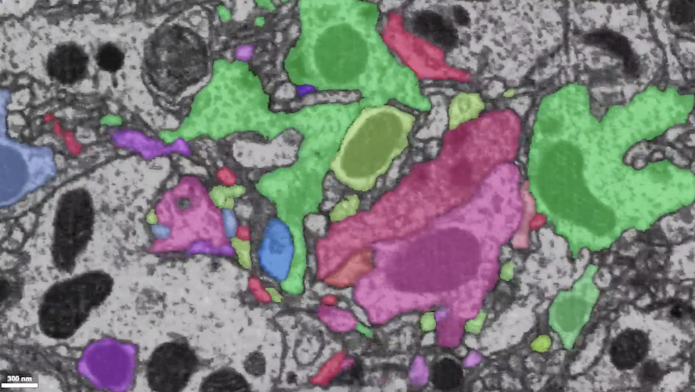Watch: Building the Ultimate Brain Map

By clicking to watch this video, you agree to our privacy policy.
A detailed map of every neuron and neuronal connection in the brain — called the connectome — is key to deciphering critical aspects of brain function. But constructing such a map is a painstaking process that, when done by hand, is prohibitively expensive. At the Flatiron Institute’s Center for Computational Neuroscience (CCN), researchers have beeen employing machine learning algorithms to help automate this process.
Led by CCN group leader Dmitri ‘Mitya’ Chklovskii as well as collaborators at Lomonosov Moscow State University and the Howard Hughes Medical Institute’s Janelia Research Campus, the research team has focused their efforts on the visual system of the parasitoid wasp (Megaphragma amalphitanum). This species of wasp contains just 7,400 neurons, yet it has many of the same behaviors as larger insects, making it an ideal subject of study.
Their work has already revealed several surprises, not the least of which is the amount of neural complexity found in such a small creature. Indeed, the organization of neurons and neural circuits in these wasps aligns quite closely with the brains of more complex species, an indication that no matter the size of the organism, the brain can work in similar ways.
This research is not only critical to building fundamental understanding of normal brain function, it also stands to reveal clues to disorders of the brain, such as Alzheimer’s disease and Parkinson’s disease, in which that normal brain function is disrupted.
For deeper reading:
Plaza, S. M., Scheffer, L. K., & Chklovskii, D. B. (2014). Toward large-scale connectome reconstructions. Current opinion in neurobiology, 25, 201-210.
Makarova AA, Polilov AA, Chklovskii DB. 2021 Small brains for big science. Curr Op Neurobiology. 71: 77-83.
Polilov AA. 2012. The smallest insects evolve anucleate neurons. Arthropod Struct Dev. 41(1): 29-34.
This video is part of Visualizing Science, a series of short, explanatory videos featuring scientific visualizations and computational models — narrated by the scientists who created them.